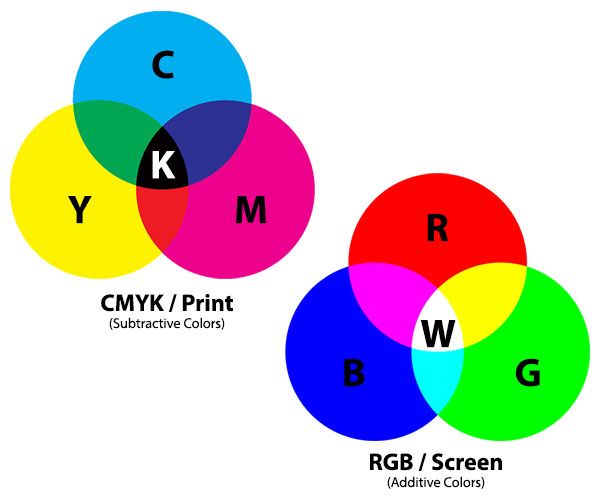
When talking about digital printing, some confusion arises between RGB and CMYK. Many photo lovers do not know the type of color space produced by their digital cameras hence they get confused when printing images. Usually, they click on print, but, are not content with the image that has been printed since it appears different from what they view on the monitor.
Both CYMK and RGB are color descriptions. CMYK represent Cyan, Magenta, Yellow, and Key (black). By mixing the four colors in varying amounts, millions of others shades are produced in the printed material. These links are utilized when printing photos in books and magazines. RGB describes the colors of images that are viewed on the monitor. It is the abbreviation for Red, Blue, and Green. The RGB shades are light and when mixed in different quantities, millions of shades are created on the monitor. It is worth noting that all the images viewed on the monitor are RGB except if a conversion to CYMK has been done.
Notably, printed images use CMYK inks hence viewing the image in RGB on the monitor and printing it in CYMK may not produce the desired results. There are programs like Adobe Photoshop that convert the image from RGB to CYMK and vice versa. There are certain printers, which must have the image converted to CYMK before printing. Some of the printers available in the market cannot print the image properly if it is in RGB.
It is important to view the image in CMYK before printing it out. It is common for color changes to be evident in case an image is converted from RGB to CYMK. The discrepancy is evident because the majority of the shades in RGB cannot be easily reproduced by using CMYK inks. This is the reason why the image should be converted to CMYK before printing. Major color changes to the images can be noticed, especially in the color areas that are extremely intense. Some of the intense shades may seem dull after the conversion has been done. However, this can be fixed using a photo editing software program.
Majority of the inkjet printers available in the market today print directly from RGB. It is advisable to determine the specific color space that your printer is able to support. The software packed along with the printer can provide information regarding the color spaces. If a conversion option is not provided, the printer will print its images directly from the RGB color space.
RGB is the format that is used for projection, video monitors, digital photos and video monitors. RGB produces more vibrant and bright colors as compared to CYMK. RGB is considered an additive kind of color space since it produces all colors when added to the black monitor. Usually, the more light that is added to the monitor, the more white is produced. The values of RGB are shown as numbers for each color. CYMK uses a different method of getting the desired colors. CMYK can be described as a subtractive color approach. this means that light is subtracted from a white piece of paper. This is achieved through the addition of more ink. The more ink that is added to paper, the more black it gets. The values of CMYK are expressed using percentages.
Although CMYK is utilized for printing, RGB is more efficient for other jobs as it is versatile and can display more colors. CMYK can only print 70% of the colors that are available in RGB. CMYK cannot produce most of the vibrant colors. CMYK is the modern model for digital printing even though, there are some improvements in technology that aim at making RGB printing easier. By understanding the differences between RGB and CMYK, it becomes easier to understand the concept of printing images.
The main thing to remember is to print out images using RGB in case the software and printer support it. If you want to have more control over the colors of the image, then print using CMYK. This is because you can manipulate the color of the image as you wish. It is common for the limits of the CMYK color print spectrum to be displayed on the monitor.
.png)
